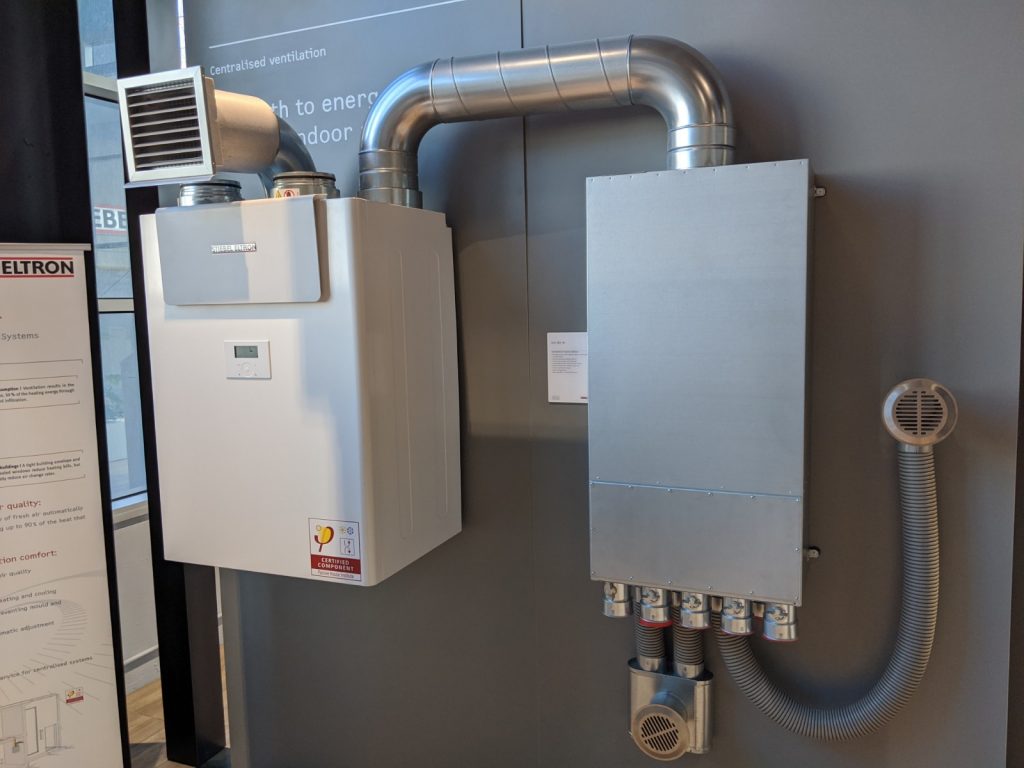Exactly How Heat Recovery Ventilation Enhances Indoor Air Top Quality and Reduces Energy Prices
Heat Recovery Ventilation (HRV) systems play an essential function in improving interior air quality while simultaneously lowering energy expenses. By successfully exchanging stagnant indoor air with fresh exterior air, HRVs assist maintain optimal humidity and minimize pollutants. Furthermore, their ability to recover warmth from outbound air minimizes the stress on heating and cooling systems. As energy costs remain to climb, understanding the complete capacity of HRV systems ends up being significantly important for property owners and businesses alike.
Recognizing Heat Recovery Ventilation Solutions

Heat recovery ventilation (HRV) systems play a necessary function in improving interior air high quality, specifically in modern-day, energy-efficient buildings. These systems are created to move heat from the outgoing stagnant air to the inbound fresh air, thereby reducing power loss while keeping ideal temperature level degrees inside your home. HRVs include a warm exchanger, followers, and ductwork, facilitating the constant flow of air. By getting rid of interior toxins and introducing fresh air, HRVs help to balance humidity degrees, prevent mold and mildew development, and reduce allergens. The performance of HRV systems lies in their capability to recoup up to 80% of the warm from the worn down air, promoting energy preservation while making certain a healthy indoor atmosphere. Their assimilation is vital in accomplishing sustainable living practices.
The Significance of Indoor Air Quality
Indoor air quality (IAQ) is a vital aspect influencing the health and well-being of occupants in any kind of setting. Poor IAQ can cause different health issues, consisting of breathing problems, allergies, and fatigue. In addition, it can worsen current problems such as asthma. Factors adding to low IAQ include toxins from indoor sources like cleansing agents, mold and mildew, and insufficient ventilation. Maintaining great IAQ is crucial for promoting a safe and comfortable living or functioning space. Efficient techniques to enhance IAQ include regular monitoring of air high quality, correct ventilation systems, and lessening the usage of damaging materials inside. By focusing on IAQ, people can ensure a healthier setting that promotes efficiency and total lifestyle.
Power Effectiveness Advantages of HRV Solutions
Lots of property owners and building managers are significantly acknowledging the power performance benefits of warmth healing ventilation (HRV) systems. By transferring warm from worn down indoor air to incoming fresh air, HRV systems considerably minimize the energy needed for home heating and cooling. This procedure decreases reliance on standard HVAC systems, bring about reduced power expenses. Furthermore, HRVs help maintain a well balanced indoor environment, preventing extreme heating or cooling down needs. The ability to recuperate approximately 90% of the warm from outgoing air also sustains sustainability initiatives by lowering total energy consumption. HRV systems contribute not only to set you back financial savings but also to a lowered carbon impact, aligning with the expanding emphasis on energy-efficient building techniques.
Setup and Maintenance Considerations
The reliable application of heat recuperation ventilation (HRV) systems needs mindful factor to consider of installation and maintenance factors to assure peak efficiency. Appropriate positioning article of the HRV device is vital, as it needs to be set up in a location that takes full advantage of airflow while lessening noise interruption. Additionally, ductwork needs to be appropriately sized and protected to stop power loss. Routine upkeep, including filter replacement and system cleansing, is crucial to safeguard optimal performance and interior air quality. Proprietors should establish a normal upkeep routine to recognize and address possible issues prior to they escalate. Collaboration with experienced specialists throughout both installation and maintenance stages can boost the longevity and performance of HRV systems, eventually resulting in far better interior environments and decreased power prices.
Real-World Applications and Success Stories
Exploring real-world applications of heat healing air flow (HRV) systems discloses their substantial effect on indoor air high quality and energy performance across numerous setups. In household structures, property owners have reported enhanced air high quality, leading to less allergies and breathing problems. Schools carrying out HRV systems have actually kept in mind improved trainee concentration and decreased absence as a result of better ventilation. Business structures, such as workplaces and retail areas, have experienced lower power prices and enhanced staff member performance. A corporate office in a warm environment attained a 30% reduction in energy bills after setting up an HRV system. These success tales show that HRV technology not only adds to healthier atmospheres but additionally offers substantial economic benefits, making it an important financial investment for numerous markets.
Frequently Asked Questions
Can HRV Systems Decrease Irritants in Indoor Air?
The performance of HRV systems in lowering indoor irritants primarily rests on their capability to filter and exchange air. HRV Heat Recovery Ventilation. By continuously replacing stale air, these systems can substantially lower irritant degrees throughout indoor atmospheres

Exactly How Does Humidity Affect HRV System Performance?
Moisture considerably influences HRV system performance; high degrees can result in condensation, see this site decreasing efficiency, while reduced humidity might improve air exchange. Balancing moisture is essential for optimal procedure find and preserving interior air high quality.
Are HRV Equipments Noisy Throughout Procedure?
HRV systems can generate differing sound degrees throughout operation, depending upon their style and setup. Some devices run quietly, while others might produce noticeable noise, especially at greater airflow setups or when poorly preserved.
What Is the Average Life Expectancy of an HRV System?

Can HRV Solutions Be Utilized in All Climates?
HRV systems can be made use of in different environments, yet their performance may differ - HRV Heat Recovery Ventilation. In extreme temperature levels, adjustments or supplementary systems may be necessary to ensure perfect efficiency and comfort while preserving indoor air quality